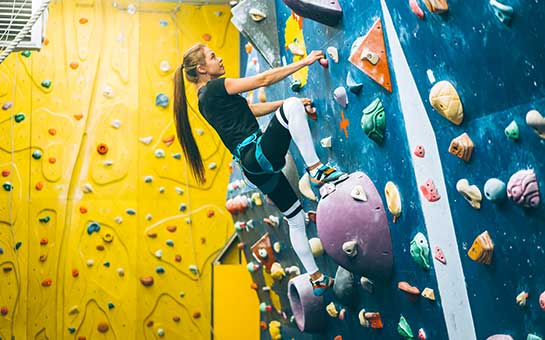Indoor climbing is a popular recreational activity around the world. Outdoor rock climbing requires certain terrain, and it is often not possible to find boulders or hills within a city. As a result, many recreational parks have indoor climbing facilities.
If you are travelling and you want to try out indoor climbing, then make sure you go only to a registered place where they have all necessary equipment in place.
Indoor climbing requires adequate protective gear like helmets, harnesses, and other proper climbing tools, as the climbing walls can reach heights of 40 feet (about 12 meters) or more. If you are injured while enjoying this adventurous activity, indoor climbing travel insurance can help cover the medical expenses if the activity is covered in the pre-purchased plan.
Travel Insurance for Indoor Climbing
While travelling outside your country, make sure you have travel insurance if you plan to try out indoor climbing. Many standard, baseline travel insurance plans might not provide coverage for inherently risky activities like indoor climbing. In that case, you can buy additional insurance to be sure you have the necessary coverage.
Accidents from indoor climbing could be severe, so do not try this activity in the spur of the moment. If you are sure that you will partake in indoor climbing during your vacation, then make sure you have appropriate insurance coverage before you engage in the sport.
Do not try to scale great heights at the very beginning if you are a novice climber. Since medical expenses in a foreign country can be expensive, you could end up paying a lot more if you suffer severe fractures in case of a fall during a climb.
You might also need evacuation if the medical facilities at your destination are unable to provide the care you need. Indoor climbing hazardous sports travel insurance can help cover the cost of treatment and evacuation in such cases. Be sure to read the fine print of your indoor climbing insurance plan so you know what benefits are included.
Introduction to Indoor Climbing
Indoor climbing involves climbing up steep surfaces with grips bolted in or grooves cut into them for holds. The climbing experience is designed to simulate that of an outdoor element, like a boulder or a hill.
Climbers have to use the grooves and footholds to pull themselves up the surface, just as they would while trying to climb a rockface.
Apart from recreation, this activity is also popular among outdoor climbers as an important aspect of their fitness and training regimen. Climbing tones the muscles and helps improve strength and stamina.
Indoor climbing surfaces are also used as a practice ground before one finally takes on more rugged terrain outdoors. It gives climbers an idea about how surfaces work and lets them hone their skills.
It is very important to be careful during these climbs, because a fall could lead to severe fractures or even paralysis in extreme cases.
Risks of Indoor Climbing
Although indoor climbing is safer than outdoor climbing, it still has its share of risks. Travel insurance for indoor climbing will give you peace of mind while trying out this sport.
The biggest risk is falling. Indoor climbing surfaces can be as high as 40 feet (about 12 meters) or even more. A fall from such a height could lead to severe injuries in the bones. Indoor climbing facilities require climbers to wear harnesses, be attached to ropes, and have a partner called a belayer who keeps the climber from falling. However, no safety precaution is entirely foolproof.
It is important to wear proper protective gear like helmets, gloves, and climbing boots while climbing. You should also check that you are tightly strapped in so that you do not suffer a sheer drop in case you lose your footing.
There are also risks of severe muscle strain or ligament tears, as climbing exerts a good amount of strain on your muscles. Try to scale smaller heights in the beginning and increase your height gradually.
Registered indoor climbing areas have all these precautions in place. If you try indoor climbing in a place that does not have protective gear or an emergency response system, then you could run into a huge risk.
